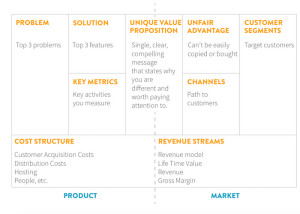I just had a fantastic evening at the STHLM Tech Meetup, and what it featured was not only a series of interesting pitches (of launched and not-yet-launched ventures) but also a very compelling introduction to event supporters. One of these really struck my interest by the nature of what they do. It was a firm, called “The Service Corporation”, presented by the founder and CEO himself. They offer a global expansion It wasn’t the actual start-up which was compelling, but rather the thought that followed. By now, there are so many firms that do not directly produce any smart venture ideas, but rather fit into the start-up process of others.
It’s about the trend of “enabling entrepreneurship”, and that is done in a modular behaviour. We’ve seen ventures like this before. Rocket Internet (GER), which capitalise on ‘replicating’ successful business models from the US in Europe – and, thus, act as a “globaliser” to the original start-up. Or “The Service Corporation”, which offers to team up with start-ups and give them the resources needed to penetrate foreign markets. It’s not about incubating anymore; these ventures follow the definition of modularisation. If one thinks of four principle steps: Discovery, Validation, Creation, Building – one will realise that all these are somewhat modules, and the value propositions of these “Enabling” start-ups.
Likewise, one of the first guest lectures, Joakim Fohlman outlined that “Cubimo” bases on helping others discover and develop venture ideas (First Module; Discovery). Furthermore, “FundedbyMe” or “Kickstarter” fit in as the second module of “Validation”. These not only are tools to gain proof of concept status, but also enable the following step of funding. The next module (Creation) is given; players such as “TED” or “STHLM Tech Meetup”, which help reach the desired customers and offer growth opportunities. The fourth step is given by todays presenter, and inspiration to this; ventures like “The Service Corporation” enable growth into new markets.
This might not be too novel of a thought, but what I can identify are the two types of innovation; Product- and Process-Innovation. And from remembering the strategy lectures, Process Innovation follows Product Innovation – and that might indicate a lacking venture ideas in the entrepreneurs market. I don’t hope that is the case, but it could rather be that we have exhausted current technologies. Perhaps, this can be derived from the fact that big, enabling technologies take a lot of time to develop – far more time than is needed to launch a bunch of start-ups that capitalise on them (especially with the popular lean start-up structure). I interpret it as a call for forward-thinking innovation – strategically going for product innovation when process innovation is “in cycle”.




